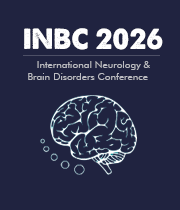Title : Artificial intelligence / Machine Learning (AI/ML) has the potential to predict the risk for stroke, days before the symptoms appear
Abstract:
Background
There are 12 million new stroke occurrences every year. 100 million people are living with stroke aftermath worldwide. $900 million are spent on stroke every year. 85% of strokes have no warning signs. 2 million neurons are lost every minute after stroke. If the treatment is initiated quickly, then the neurological impact is reversible. AI/ML algorithms has the potential to predict the risk for stroke, days before the symptoms appear.
Methods
ML models were trained with over 3000 sets of urine test results and 6500 sets of blood test results data from patients with and without stroke from MIMIC-IV, a hospital-wide electronic health record (EHR) dataset from Beth Israel Deaconess Medical Center, Boston, MA. Separate gradient boosted models for blood and urine results produced optimal performance. The input parameters consisted of age, gender, and the results of routine blood and urine markers recorded up to 1 week before the diagnosis of stroke was identified. An evaluation of the performance was conducted using the area under the curve (AUC).
Results
The models were tested in a population with a stroke prevalence of 3%. The blood model predicted the risk for stroke, with an AUC of 0.83 and accuracy of 0.42. This gave the model 0.90 sensitivity, 0.41 specificity, 0.04 positive predictive value, and 0.99 negative predictive value. Glucose, platelet count, bicarbonate, hematocrit and red blood cells seemed predominantly to contribute to the identification of risk for stroke. The urine model predicted the risk for stroke, with an AUC of 0.83 and accuracy of 0.39. This gave the model 0.92 sensitivity, 0.37 specificity, 0.04 positive predictive value, and 0.99 negative predictive value. Blood, urobilinogen, specific gravity and nitrite seemed predominantly to contribute to the identification of risk for stroke.
Conclusion
Studies have shown that hyperglycemia can worsen the consequences of stroke by increasing oxidative stress, systemic inflammation, and barrier permeability. It can also increase the damage caused by reduced blood flow to the brain due to atherosclerotic changes to blood vessels increasing the risk of blood clots, which can cause a stroke. Platelet count is an important factor in stroke risk, as it plays a role in thrombus formation, atherosclerosis, and platelet activity. High-dose administration of undiluted sodium bicarbonate is shown to decrease the cerebrospinal fluid (CSF) pressure causing intracranial hemorrhage, particularly in the pediatric population. Hematocrit levels have been found to be associated with stroke risk through increased blood viscosity. Blood in the urine, and its coloration may indicate urinary tract infections (UTI). UTI can increase the risk for stroke by 5 folds. Urine specific gravity can be used as a predictor of early neurological deterioration in acute ischemic stroke and is associated with worse functional outcome. There is some evidence that nitrate intake may play a role in stroke and atherosclerosis prevention. AI/ML model identified the pattern of the combined values of these markers, contributing to the prediction. Thus they may help to identify the risk for stroke days before neurological symptoms appear and facilitate prompt diagnosis and treatment.




